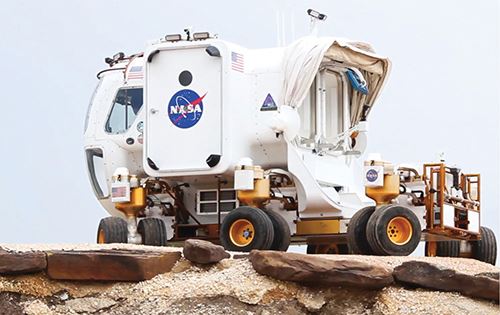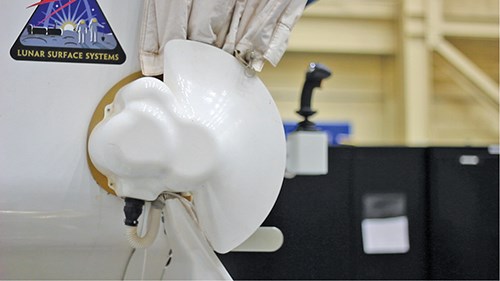NASA's 'Mars Rover' Has Many 3D Printed Parts
A Fortus 3D printer from Stratasys, Inc., Eden Prairie, Minn., was used by NASA to help build a next-generation rover capable of supporting two humans on near-earth asteroids and Mars.
A Fortus 3D printer from Stratasys, Inc., Eden Prairie, Minn., was used by NASA to help build a next-generation rover capable of supporting two humans on near-earth asteroids and Mars. The rover is about the size of a Hummer and has a pressurized cabin and observation bubble.
NASA has been test-driving the vehicle in the Arizona desert, maneuvering it on the unforgiving terrain at weather conditions said to simulate those on Mars. About 70 rover parts were built digitally, directly from computer designs, in a production-grade Stratasys 3D printer. It uses the company’s patented Fused Deposition Modeling (FDM) technology for the creation of complex shapes through additive manufacturing.
NASA engineers chose the FDM method because it uses production-grade thermoplastics like ABS, PC, and PC/ABS, which are lightweight but durable enough for rugged end-uses. The Mars rover parts include flame-retardant vents, pod doors, and many custom fixtures.
One ear-shaped exterior housing (shown) is deep and contorted, and would be nearly impossible to build without 3D printing, according to NASA test engineer Chris Chapman. He says NASA engineers also 3D print prototypes to test form, fit, and function of parts that will eventually be built in other materials. This validates part designs before committing to expensive tooling.
Related Content
-
Prices Up for PE, PP, PS, Flat for PVC, PET
Trajectory is generally flat-to-down for all commodity resins.
-
First Quarter Looks Mostly Flat for Resin Prices
Temporary upward blips don't indicate any sustained movement in the near term.
-
The Effects of Time on Polymers
Last month we briefly discussed the influence of temperature on the mechanical properties of polymers and reviewed some of the structural considerations that govern these effects.













